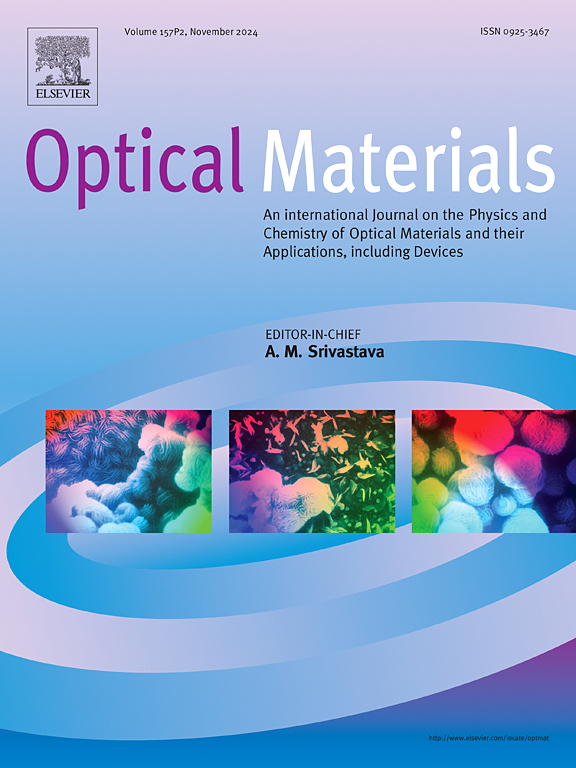基于法布里-珀罗腔的高效高增益氧化铟锡光学透明天线
IF 4.2
3区 材料科学
Q2 MATERIALS SCIENCE, MULTIDISCIPLINARY
引用次数: 0
摘要
将光学透明天线(TA)集成到玻璃设施中,可以加强室内基础设施的智能交互,释放空间和美学的约束。本文首次提出了采用氧化铟锡(ITO)薄膜和玻璃基板的全透明法布里-珀罗腔(FPC)天线,以提高效率和增益。提出了有损耗透明部分反射表面的FPC理论。TA由一个高效透明单极馈电天线(TMFA)和两个透明prs组成。基于所提出的理论对prs进行了优化。此外,优化了TA的结构,在透明度和辐射效率之间取得了良好的折衷。prs上的多共振单元被设计用来提高带宽。所提出的透明FPC天线总体光学透明度为84%,峰值效率为70.4%。孔径尺寸为2.2×2.2λ02时,峰值增益可达11.7 dBi, 3db增益带宽为4.9 GHz至6.3 GHz。此外,透明腔体结构使天线可以与室内双层玻璃无缝集成。本文章由计算机程序翻译,如有差异,请以英文原文为准。
High efficiency and high gain indium tin oxide optical transparent antenna based on Fabry–Perot cavity
Integrating optical transparent antenna (TA) into glass facilities can strengthen the intelligent interaction of indoor infrastructure and release spatial and aesthetic constraints. This paper proposes the first fully transparent Fabry–Perot cavity (FPC) antenna using indium tin oxide (ITO) film and glass substrates to improve the efficiency and gain. The theory for FPC with lossy transparent partially reflecting surfaces (PRSs) is proposed. The TA is composed of a high efficiency transparent monopole feeding antenna (TMFA) and two transparent PRSs. The PRSs are optimised based on the proposed theory. Additionally, the structure of the TA is optimised to get a good compromise between transparency and radiation efficiency. Multi-resonance cells on the PRSs are designed to improve the bandwidth. The proposed transparent FPC antenna obtains an overall optical transparency of 84% and a peak efficiency of 70.4%. A peak gain of 11.7 dBi is achieved with an aperture size of 2.2, and the 3 dB gain bandwidth spans from 4.9 GHz to 6.3 GHz. Furthermore, the transparent cavity structure makes the proposed antenna can be integrated with indoor double glazing seamlessly.
求助全文
通过发布文献求助,成功后即可免费获取论文全文。
去求助
来源期刊

Optical Materials
工程技术-材料科学:综合
CiteScore
6.60
自引率
12.80%
发文量
1265
审稿时长
38 days
期刊介绍:
Optical Materials has an open access mirror journal Optical Materials: X, sharing the same aims and scope, editorial team, submission system and rigorous peer review.
The purpose of Optical Materials is to provide a means of communication and technology transfer between researchers who are interested in materials for potential device applications. The journal publishes original papers and review articles on the design, synthesis, characterisation and applications of optical materials.
OPTICAL MATERIALS focuses on:
• Optical Properties of Material Systems;
• The Materials Aspects of Optical Phenomena;
• The Materials Aspects of Devices and Applications.
Authors can submit separate research elements describing their data to Data in Brief and methods to Methods X.
 求助内容:
求助内容: 应助结果提醒方式:
应助结果提醒方式:


